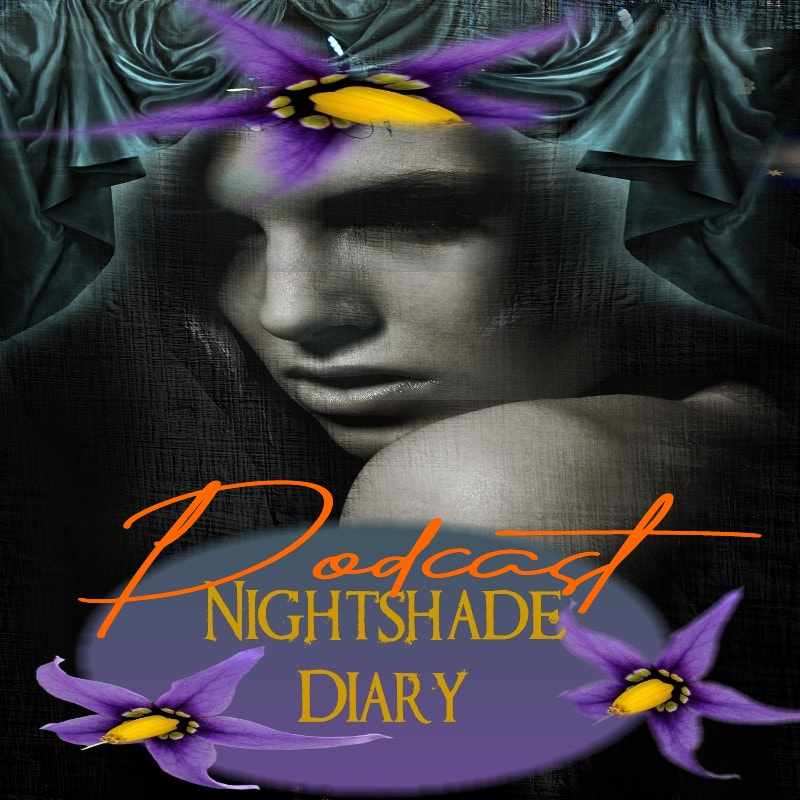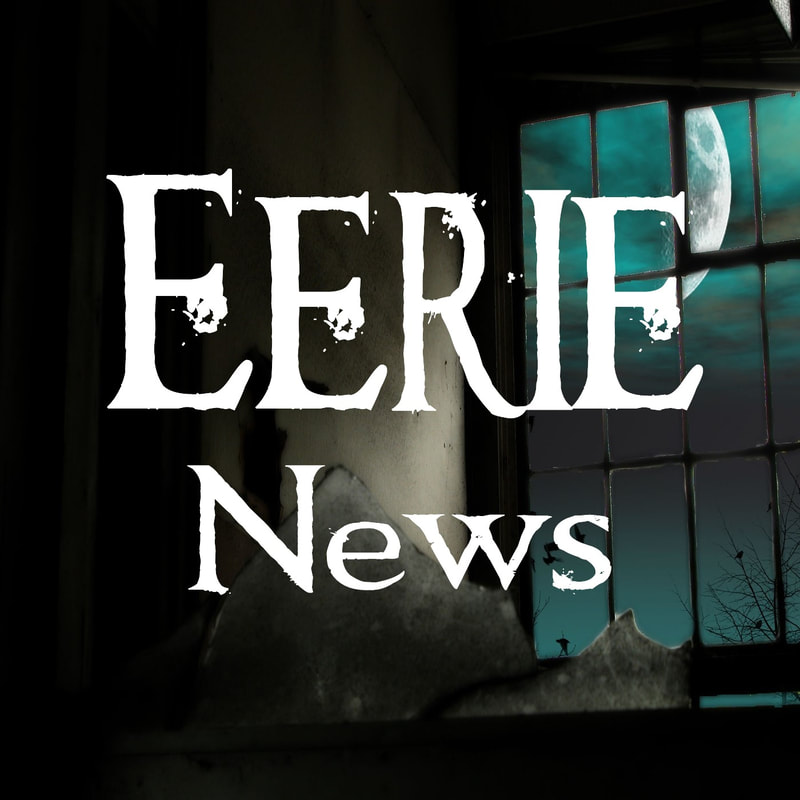 By M.P. Pellicer | Stranger Than Fiction Stories Undoubtedly historic homes develop a reputation for being haunted. In some cases it's undeserved, and other times there's no doubt that something still walks the halls and paths of what once its home.  Painting at rear staircase at Wollaton Hall Painting at rear staircase at Wollaton Hall The following is an allegedly true story, told by someone who visited Wollaton Hall, (U.K.) several times: In Wollaton Hall, Nottingham, in the rear staircase, is a mural of Roman priests, worshipers and attendants going into a temple. It's okay, not outstanding. It's painted onto, I believe, a huge canvas rather than into the plaster. It was made in the eighteenth century, based on the style. 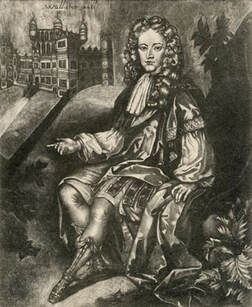 Sir Francis Willoughby c.1680 Sir Francis Willoughby c.1680 Wollaton Hall was built in 1580, for Sir Francis Willoughby. It would take eight years to complete the house, and no expense was spared. There were about 200 statues decorating the estate, and the chimneys curved to meet in the middle in the form of a crown. Seven miles of wall enclosed the park. In 1642, a fire broke out and destroyed part of the Great Hall, and spread to two sides of the house. By the early 18th century, Queen Anne had created a baronetcy for the family, and they became known as the Middleton family. In 1926, after the death of Godfrey Ernest Percival Willoughby, 10th Baron Middleton (1847-1924), the Hall and the 800-acre estate passed into the hands of the Nottingham Corporation (City Council) due to death duties. The Natural History of Museum was opened on the premises soon after.  Lord and Lady Middleton c.1912 at Wollaton Hall. Lord and Lady Middleton c.1912 at Wollaton Hall. Perhaps it was during this transition that the skeletons described in the report were found, however there is no mention in any of the newspapers that they had made this discovery. Perhaps it was kept out of the press so it wouldn't hurt the image of the new museum. The museum stayed open except during WWII when it was occupied at various times for use by the Army, as a schoolroom for pupils of Radford Boulevard school, and a camp for German Italian prisoners of war. Wollaton Hall is said to be haunted. The most persistent is the White Lady who walks the half roof at night, even though she was not seen for many years. There is an orange glow that comes from the window of Room 19 which was once Lady Middleton's room, even when no electricity is turned on. An attendant at the hall for six years who lived in an apartment in the stable, saw it more than once. The first time was around 1971, when he was walking through the park with one of the gardeners and his wife. The two men believed someone had broken in, and as they got closer the light went out. They checked and the electricity was off at the main switch and the door to the room was locked. 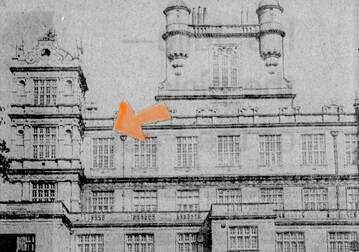 Collaton Hall with window of Room 19 c.1975 (Source - Evening Post) Collaton Hall with window of Room 19 c.1975 (Source - Evening Post) Another time was in 1974, when the attendant saw it and so did his wife. They didn't investigate and the burglar alarms did not go off. Room 19 is just below the roof where the White Lady is said to walk. Some wonder if she is the one that causes the mysterious footsteps on the stairs, in the rooms and even on the garden path. In 1973, the hall was being rewired and an electrician heard footsteps on the uncarpeted wooden treads. He stepped aside in order to allow the person to go past, but all he heard were footsteps go by him. Nobody was there. He felt the temperature become very cold. He dropped his tools, went down the stairs and out of the building. One of the attendants saw him leave, and never return. In 1974, an attendant was standing near the inquiry desk when he heard a low whistle and someone walking across the Minstrels' Gallery from left to right. He went upstairs to look, thinking it was a live person. The gallery was empty. When he came back down he heard the same thing again. In the Admiral's bathroom, which is an underground room containing a spring where a member of the Middleton family used to take his daily bath, the sound of laughter has been heard when there is no one there. The museum's school officer had an office in the north-east tower in 1975. One day she was at the top of the tower, close to rooms that were used for storage. She heard a child's voice coming from behind one of the doors. She couldn't make out the words, but it sounded like an excited girl. She knew the room was empty and locked. In 1975, the curator at Wollaton Hall, said that when any of the employees had to do fire-watching duties in the hall, none wanted to stay in the hall alone. In the stable block bedroom doors are closed and opened, and footsteps are heard on the stairs, followed by a knock on the door when there was no one there. In 1980, the museum was redone and a new exhibition was opened in the Great Hall officiated by Lord Middleton. Wollaton Hall was used in the film The Dark Knight Rises (2011) as the Wayne Manor. In 2021, the fossil of Titus the T-Rex which was found in the Montana Badlands in 2018 were put on display. In 2023, the Antiques Roadshow is filmed on the grounds of Wollaton Hall. 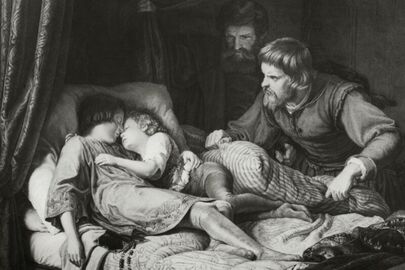 Vintage engraving (1876) depicting the murderers of the "Princes in the Tower": King Edward V and his younger brother Prince Richard, Duke of York. Vintage engraving (1876) depicting the murderers of the "Princes in the Tower": King Edward V and his younger brother Prince Richard, Duke of York. As to the discovery of bones belonging to children, there is no story found that connects Collaton Hall to this story. Many people are familiar with the discovery in 1674, of two children's skeletons found at the old Tower of London under a staircase, that was renamed the Two Princes Staircase. It was believed these were the bones of the princelings, sons of King Edward IV who died in 1483. The boys were taken by their uncle Richard III and kept in the White Tower, after which time they were never seen again. A perfunctory examination were made of the bones in 1933, which concluded that the remains were those of children roughly the same ages of 9 and 12. They were reburied in Westminster Abbey. Two more bodies that may have been the princes were found in 1789, at Saint George's Chapel, Windsor Castle. Permission has never been granted so forensic scientists can conduct DNA and other forensic analysis on either set of remains in order to make a proper identification. Source - Evening Post
0 Comments
Your comment will be posted after it is approved.
Leave a Reply. |
Stranger Than Fiction StoriesM.P. PellicerAuthor, Narrator and Producer Archives
July 2024
Categories
All
|
Stories of the Supernatural
- Stories of the Supernatural
- Miami Ghost Chronicles
- M.P. Pellicer | Author
- Stranger Than Fiction Stories
- Eerie News
- Supernatural Storytime
-
Astrology Today
- Tarot
- Horoscope
- Zodiac
-
Haunted Places
- Animal Hauntings
- Belleview Biltmore Hotel
- Bobby Mackey's Honky Tonk
- Brookdale Lodge
- Chacachacare Island
- Coral Castle
- Drayton Hall Plantation
- Jonathan Dickinson State Park
- Kreischer Mansion
- Miami Biltmore Hotel
- Miami Forgotten Properties
- Myrtles Plantation
- Pinewood Cemetery
- Rolling Hills Asylum
- St. Ann's Retreat
- Stranahan Cromartie House
- The Devil Tree
- Trans-Allegheny Lunatic Asylum
- West Virginia Penitentiary
- Paranormal Podcasts
"When misguided public opinion honors what is despicable and despises what is honorable, punishes virtue and rewards vice, encourages what is harmful and discourages what is useful, applauds falsehood and smothers truth under indifference or insult, a nation turns its back on progress and can be restored only by the terrible lessons of catastrophe."
- Frederic Bastiat
- Frederic Bastiat

Copyright © 2009-2024 Eleventh Hour LLC. All Rights Reserved ®
DISCLAIMER
DISCLAIMER
 RSS Feed
RSS Feed


